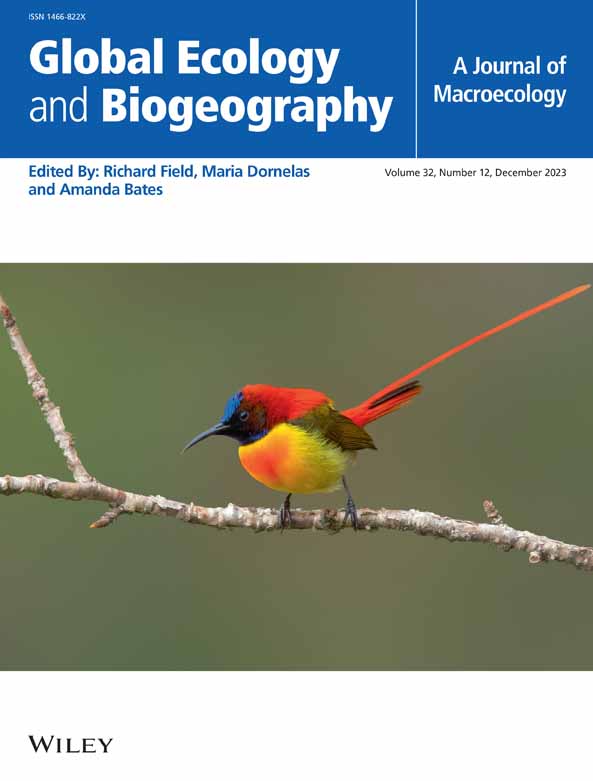Vegetation Turnovers Reduced Water Availability During the Last Icehouse
Abstract
Aim
Plants are hypothesised to have changed in function, biogeography and environmental impact throughout the Phanerozoic. The fossil record preserves large-scale shifts in water use traits with evolution. We test how time-appropriate plants modified their environment differently based on their water use traits and where they survived during Earth's penultimate icehouse using a computer model.
Location
Global Pangea.
Time Period
The Late Palaeozoic Ice Age (LPIA, 330–290 Ma).
Major Taxa Studied
Iconic plant groups of the LPIA—marratialean tree ferns, arborescent lycopsids, medullosans and early diverging conifers.
Methods
We utilise fossil-preserved water-use traits to inform a fundamental biophysical trade-off in simulations using the palaeo-ecosystem model Paleo-BGCv2.0. Simulations were driven by atmospheric conditions from an Earth System Model (CESMv1.2) for the Carboniferous (~300 Ma) to test hypotheses regarding LPIA vegetation–environment interactions. We use these simulations to infer arborescent vegetation cover and frame simulation differences so that they may be compared to two large-scale, well-documented community turnovers late in the LPIA, using end-member CO2 concentrations and plant types to evaluate potential feedbacks to water availability.
Results
Simulated forest cover varied widely in global terrestrial extent, from less than 5% to greater than 65% cover. This difference was the result of fossil-informed water-use traits corresponding to two broad categories of LPIA plants: wet- and dry-adapted. The addition of stem physiology in this work restricts wet-adapted plants to high-precipitation regions. Expanded biogeography interacted with the prolonged water use of dry-adapted plants to reduce site water balance. The transition to dry-adapted plant types with constant CO2 reduced runoff up to 36%, as compared to halving CO2, which reduced runoff up to 95%.
Main Conclusions
Dry-adapted plants likely created environments that promoted their success during the LPIA, whereby continued water use under dry conditions further dried soils and limited the abundance of drought-sensitive plants, thereby constituting an eco-evolutionary feedback. The representation of interacting plant traits in this palaeo-ecosystem modelling framework, increasingly representing whole plants, opens pathways to studying ecosystems dominated by extinct, non-analogue plants. Expanding application of the fossil record may improve our understanding of vegetation impacts on the terrestrial environment across deep time.


 求助内容:
求助内容: 应助结果提醒方式:
应助结果提醒方式:


